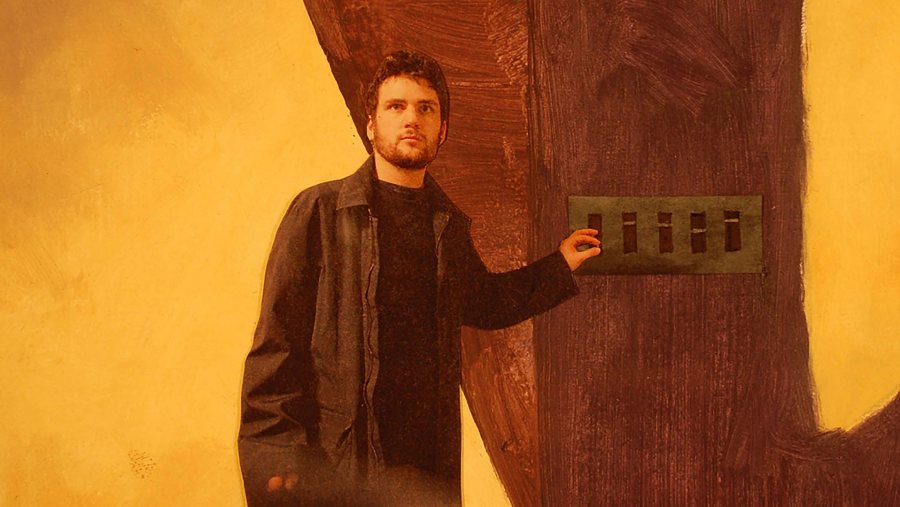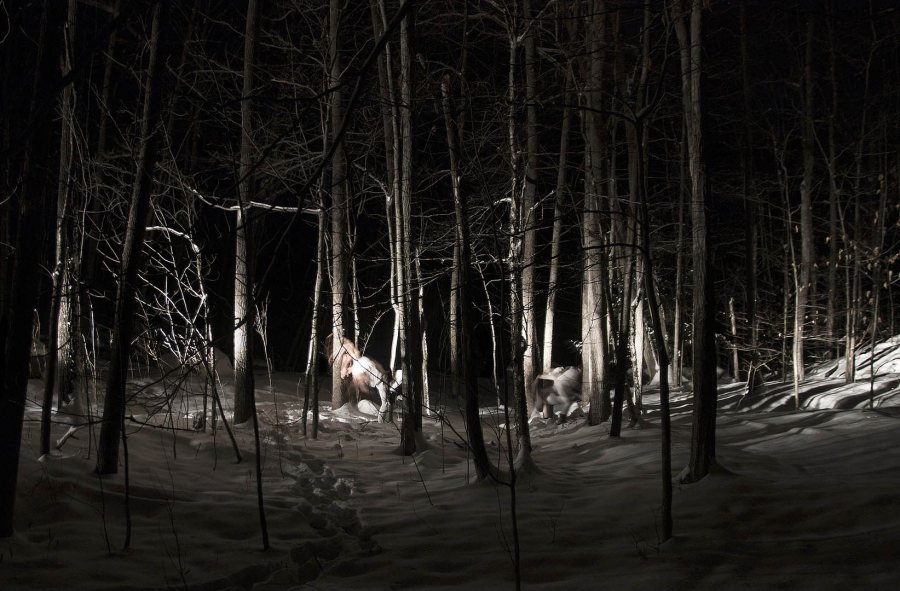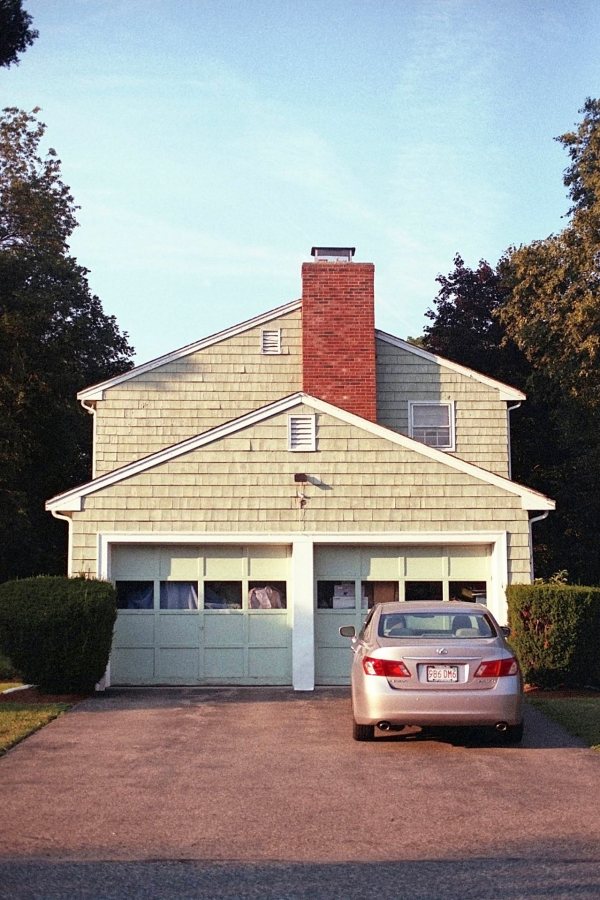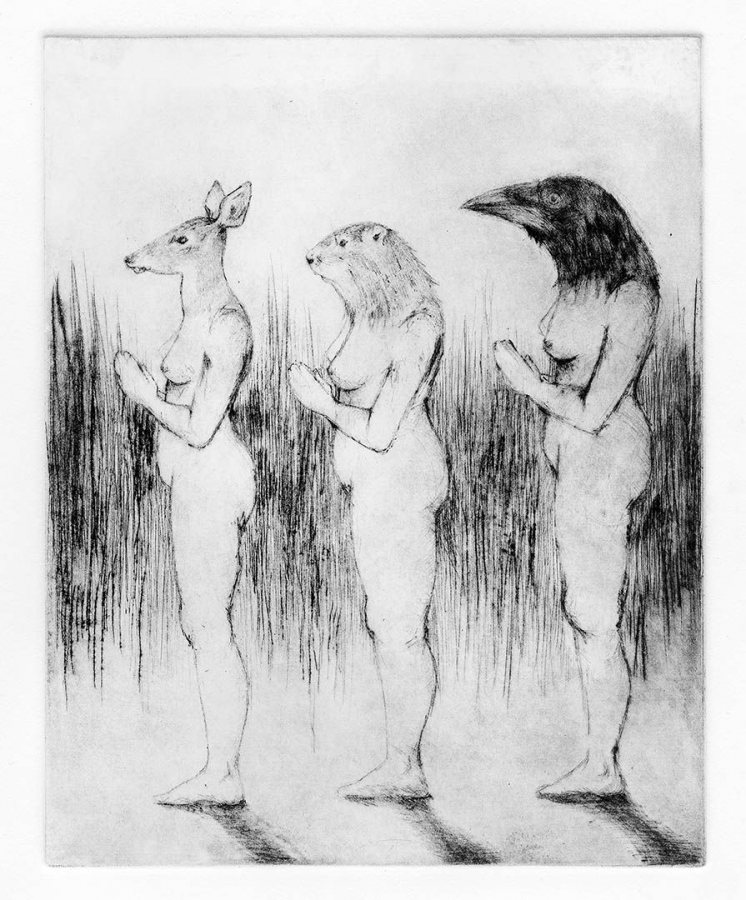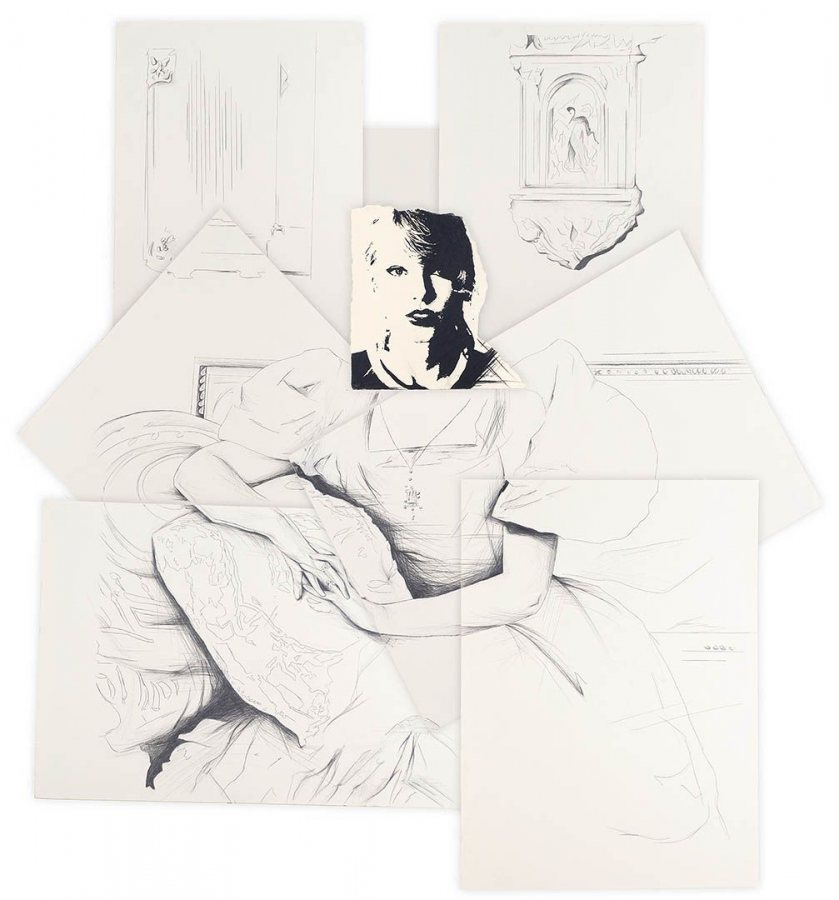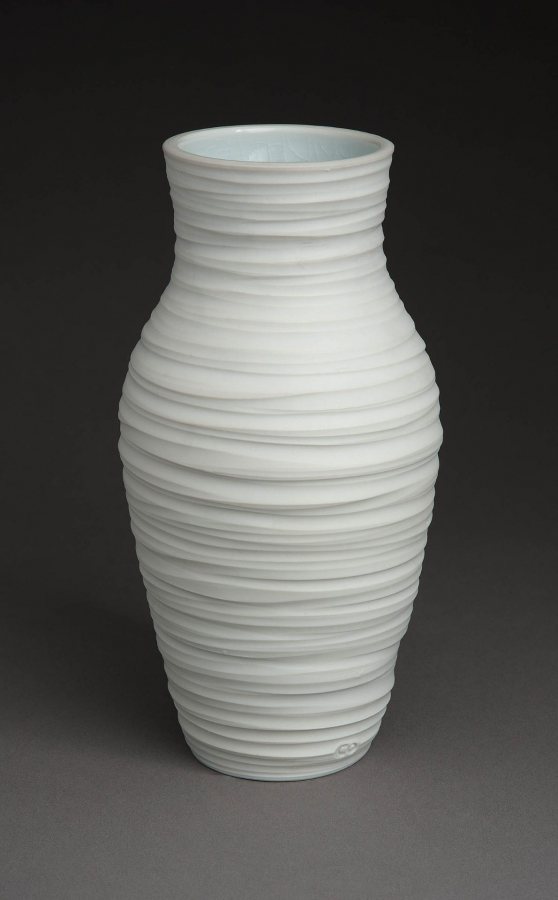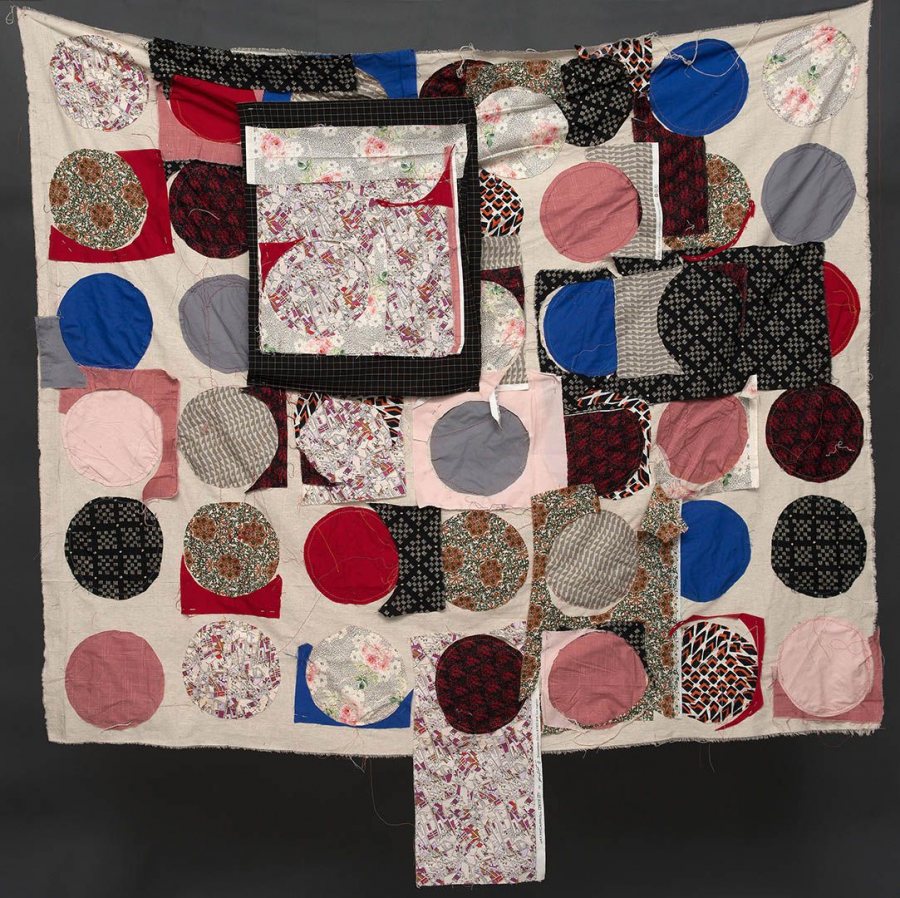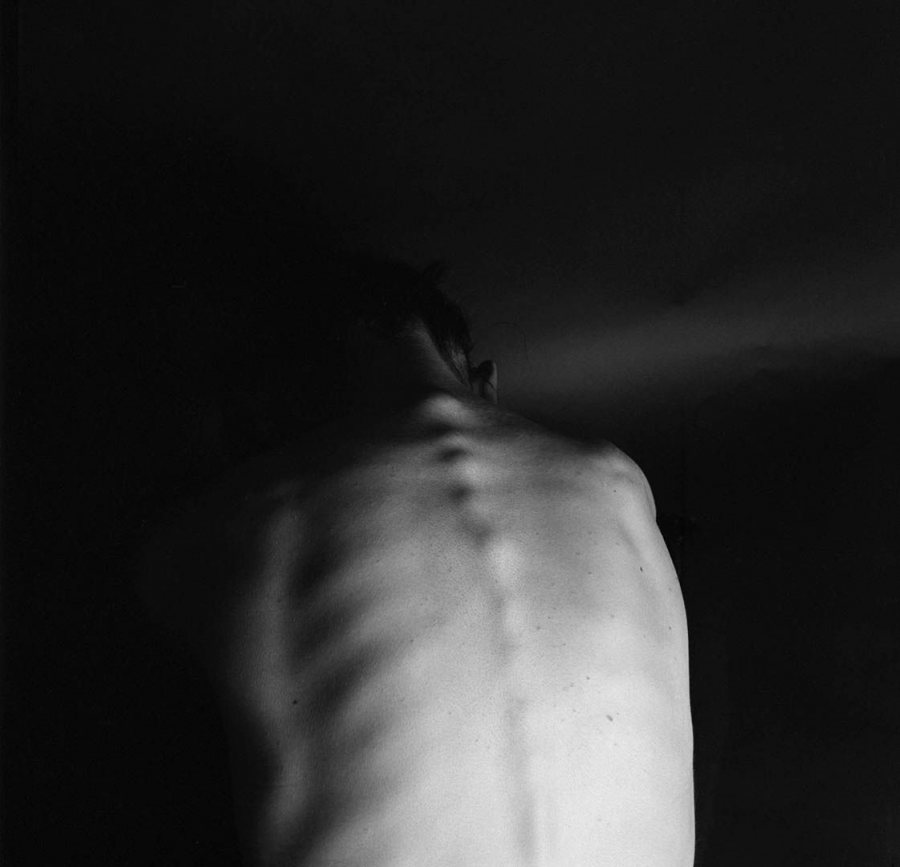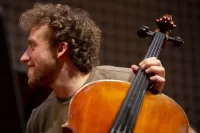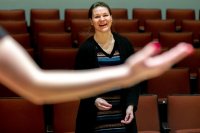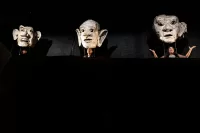
For student artists, Senior Exhibition looks both back and forward
“One of the most helpful pieces of advice I’ve gotten from the studio art faculty is that making art is not something that you do only when you’re in the mood to do it,” says Catherine DiPietro, one of 12 graduating studio art majors showing work in this year’s Senior Thesis Exhibition, opening April 8 at the Bates College Museum of Art.
“Often when you’re most frustrated and uninspired, you make your best work,” says DiPietro, who hails from Owings Mills, Md., and is showing abstract work in mixed media. “It’s been helpful to realize that I’m not restricted to trying things only when I know what I’m doing and why I’m doing it. This advice forced me to confront some of the difficulties I’ve had with thesis and work through them.”
If learning to make art is a process measured out piece by piece, or even brushstroke by brushstroke, it’s also ideally a process that helps maturing artists think on a grander scale — for instance, of making a body of work or even sustaining a career in the challenging world of art.
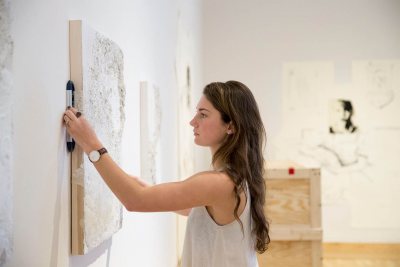
Studio art major Catherine DiPietro ’16 installs her artwork in the Bates Museum of Art. (Phyllis Graber Jensen/Bates College)
Imparting that perspective is an objective of the final year of the studio art curriculum, taught in the fall by Pamela Johnson, associate professor of art and visual culture, and in the winter by senior lecturer Robert Feintuch. For studio art majors, senior year is a time for both amassing enough work to exhibit and pondering next steps should they choose art-making as a profession. The Senior Thesis Exhibition is the culmination of that process.
A life in art is “not all about making art — that may be the main part, but it is only one part,” says Julian Bardin ’16 of Madison, Conn., a photographer represented in the Senior Exhibition. “You have to know how to sell your work, negotiate, collaborate with other people and their own visions, install work, market it, and learn how to stay within budget.
“I’ve never been involved in such a complex process with so many professionals advising me on my work, and I appreciate the resources I’ve received here at Bates to give me some perspective about what this career is like.”
DiPietro agrees, pointing to two key resources. “The faculty is so supportive of our work. They are really the ones that fuel our thesis process, although they are also really great at helping us figure things out on our own,” she says.
She adds, “I’ve been really impressed with our thesis class, because everyone is extremely dedicated to the project they’ve set out for themselves, regardless of other people’s responses to their ideas.”
Along with Bardin and DiPietro, this year’s Senior Thesis Exhibition artists are Jessie Jacobson, Stephanie Jones, Elizabeth LaVerghetta, Sasha Lennon, Catie O’Toole, Margaret Pope, William Reber, Natalie Silver, Keira Sultan, and Isabelle Unger. Their work is summarized below.
+Julian Bardin
Bardin, inspired by such artists as Rembrandt, Caravaggio, Degas, and Goya, aims to create pronounced contrasts in his photography — between darkness and light, motion and stillness, clarity and abstraction. The nature scenes he photographs are lit with car headlights, creating a sense of theatricality. He employs long exposures, subtle Photoshop touches, and large prints to enhance drama and abstraction. “I want the viewer to appreciate my photography for its formal qualities and minimalist aesthetic,” he says, “rather than to attach a narrative to the pieces.”
+Catherine DiPietro
DiPietro began her series of paintings taking inspiration from topographical maps, but soon found herself more intrigued by the art materials themselves. She creates her works by mixing sand and other materials with paint and then applying them to a board “in an improvisational manner,” she explains. Her project evolved to focus more on the process than the outcome. “My methods for creating the work straddle intention and chance,” she says. “In a way my paintings are experiments; I begin them without any knowledge of the end result.”
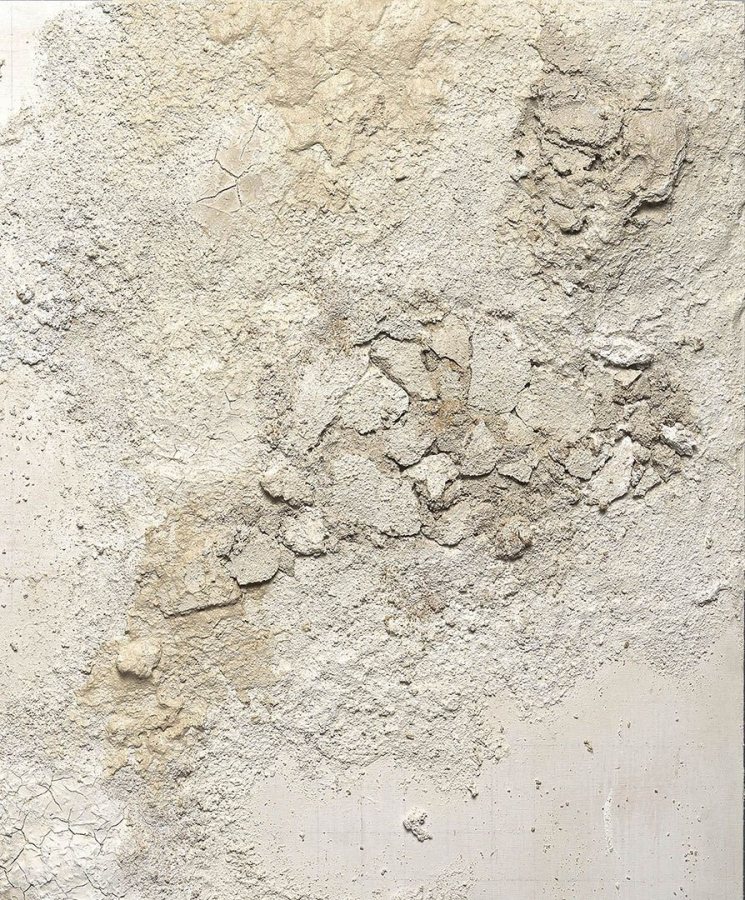
An untitled 2016 image in gesso, sand, canvas string and graphite on wood panel by Catherine DiPietro ’16.
+Jessie Jacobson
Jacobson’s photography takes inspiration from two sources: nostalgia and light, especially the “golden hour” just before sunset. Her photographs survey her suburban hometown of Needham, Mass., in an effort to capture nostalgia for her childhood. “Light is the subject of my images,” she says. “It illuminates overlooked, in-between spaces in simple and familiar suburban landscapes.” Painter Edward Hopper inspires her interest in light; whereas he was challenged to create light with paint, she challenges herself to find it with photography.
+Stephanie Jones
Jones’ prints are inspired by the interconnectedness of nature and ways that humans have used both science and religion to try to understand it. “The figures I invented build upon mythological traditions of polytheism and a strong relationship between nature and the divine,” says Jones, a resident of Ambler, Pa. She is influenced by Egyptian mythology as well as Western religious art, especially from the Italian Renaissance. Pairing her figures with imagery of plant structures, she says plants “represent the foundation of our world.”
+Elizabeth LaVerghetta
LaVerghetta’s pieces take on notions of celebrity in the 21st century by looking to high society of the past. She models her drawings after John Singer Sargent’s late-19th century portraits of young socialites, but substitutes faces of millennial celebrities for Singer’s originals. Using projection techniques to guide her charcoal and pencil drawings, she builds her images from multiple sheets of paper pinned to the wall. Hoping to give viewers “some level of visual discomfort,” this resident of Norton, Mass., aims to comment on ways in which young celebrities act out from societal norms.
+Sasha Lennon
Lennon of Cape Elizabeth, Maine, draws inspiration from nature, specifically the growth patterns of plants, in making her clay pots. In decorating the pots, she says, “ I want the tactile and colorful surface to embrace the colors, patterns, and movement that characterize flourishing ecosystems.” Lennon aims to make pottery that is both beautiful and useful. She says, “I believe that handmade objects can make meaningful, however incremental, contributions to communities by connecting the maker and user in ways that are often lost in a globalized world that incentivizes mass production.”
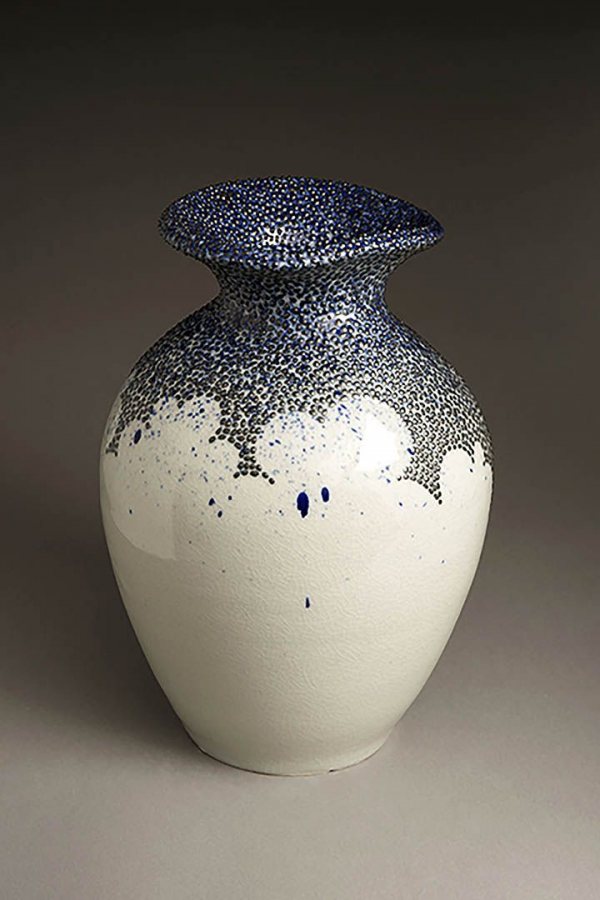
This untitled ceramic piece by Sasha Lennon ’16 is on display at the Bates College Museum of Art in the 2016 Senior Thesis Exhibition.
+Catie O’Toole
O’Toole of Alfred, Maine, makes ceramic cups, bowls, vases, and jars with a focus on functionality and simplicity. In decorating the work, she incorporates surface design into the physical structure of each piece by cutting or puncturing the porcelain. O’Toole brings a light touch to her glazes and prefers celadon because of its effect over the white porcelain and its unpredictable colors after firing. “Ceramics serves as a meditative practice for me,” she says. “I hope to make work that will bring a similar sense of peace to whomever may use it.”
+Margaret Pope
Pope’s mixed-media works, made largely from fabric, are experiments “with color, shape, and pattern, construction and deconstruction.” She is inspired by both Mongolian Buddhist art and abstract paintings. She learned about the former from the work of local artists while studying in Mongolia, and appreciates the way the paintings can command large spaces while exhibiting fine detail. “I decided to pursue those qualities in a context related to abstract painting,” says this resident of McCall, Idaho, citing such artists as Twombly, Pollock, Matisse, and Albers as influences.
+William Reber
Reber, who has made films since childhood, produced a stop-motion animated film that combines painting and photography, creating a balance between reality and artifice. The hand-painted backgrounds in each scene are inspired by Italian hillside towns and the paintings of de Chirico. Overlaid on the backgrounds are photographs of Reber himself acting as the characters in the story. While this resident of Johnson, Vt., initially used photography to save time, he found that mixing photography and painted work created an interesting contrast between reality and fiction. He says, “It lends the world I’m making a kind of authenticity.”
+Natalie Silver
Silver of Bennington, Vt., makes pottery that aims to merge precision with randomness, and style with function. In making the pots themselves, she says, “I am drawn to perfect forms that erase traces of the human hands that made them.” But when she applies surface decoration, she is influenced by plant life and the way “things happen that aren’t part of the biological plan.” Furthermore, Silver’s pots are intended for use. “I aim to make pieces that stand alone as beautiful objects, but also serve a functional purpose for their owners,” she says.
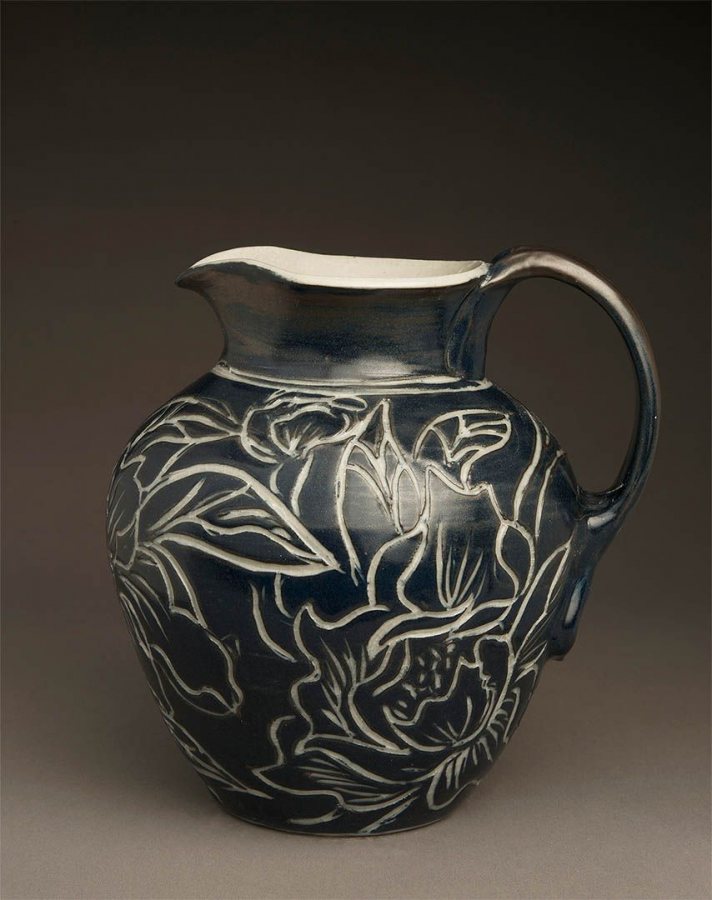
An untitled ceramic piece by Natalie Silver ’16, appearing in the 2016 Senior Thesis Exhibition at the Bates College Museum of Art.
+Keira Sultan
Sultan of Bryn Mawr, Pa., creates collages and prints that blend physical materials and their digital reproductions. She cites a lifelong fascination with “raw, imperfect textures and surfaces” as inspiration. Her works combine materials like string and wire with photographs and scanned images of objects. With this project, she says, “I want to blur the line for viewers between reality and manipulated representation.” Her work offers visual representations of order and imperfection, which she sees as metaphors for the human experience.
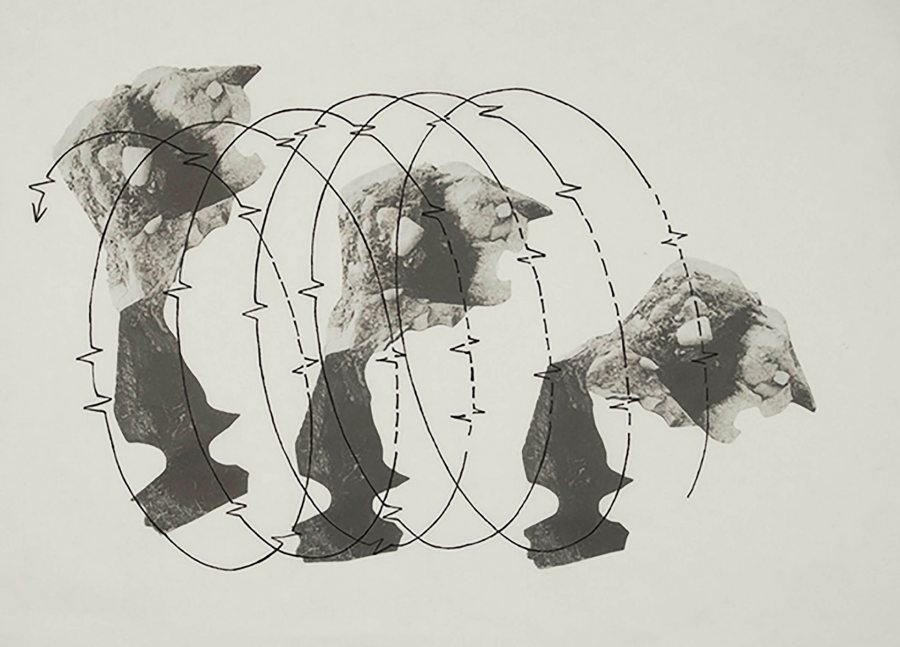
“A fly caught in amber, or a leather bottle” is a 2015 digital collage with pen and ink by Keira Sultan ’16.
+Isabelle Unger
Unger, who cites as influences photorealist painter Chuck Close and photographers Richard Avedon and Edward Weston, uses a film camera to photograph the human spine. “I am drawn to the elegance of the human form,” says this resident of Charlotte, Vt. “I choose viewpoints, positions, and lighting that stress the physical components of the back while allowing the viewer to see the model as both a vulnerable human and an abstracted form.” She uses analog photography to create an “honest portrayal” distinct from digital media, using digital technology solely to enlarge her photographs.
Katherine Courtney ’16 contributed to this report.
